Long-tail SEO is a well-known technique used by lots of blogs and websites in the online world. But we always ask ourselves before we take any action if it is still a valid SEO strategy nowadays, and how can we use it properly to see direct results.
When running a blog or a website, you probably want to get loads of visitors and traffic to become a perfect competitor. With the right strategy, you can reach your target and convert visitors into potential customers.

Keyword research is one of the best tactics to boost traffic on your website without spending much money. Using long-tail keywords can make sense if it comes to getting more targeted traffic in search engines.
Following the next well-detailed guide, you can improve your long-tails keyword strategy for the all mighty number one position in Google.
In this article, we’ll talk in detail about how important the long tail strategy is for your whole SEO game plan, then if and how it should be integrated into your keyword strategy.
Before we start with the hard part, the long-tail strategies and techniques, we must answer 2 important questions: Is the long tail keyword technique still a valid SEO strategy and how can the long tail keywords technique help you in SEO.
- Is the Long-Tail Keywords Technique Still a Valid SEO Strategy?
- How Can the Long-Tail Keywords Technique Help You in SEO?
- Long-Tail Keywords Techniques That Will Boost Your Seo Strategy
1. Is the Long-Tail Keywords Technique Still a Valid SEO Strategy?
Yes, the long tail keywords technique is a valid SEO approach for the time being. There are lots of studies that show how effective this strategy is. For example, WPBeginner, the largest free WordPress resource site for beginners, has managed to increase their organic search traffic by 20% in just two months. Thanks to the long tail keywords strategy!
Optimizing your content for short tail keywords could sometimes be inefficient. Focus on long tail keywords, because this strategy offers lots of benefits. It is much easier to rank for them because they are highly specific to your niche.
Another important aspect is the fact that people who end up on your website through a long tail keyword search are more likely to buy your product or service even though the traffic volume is smaller than for a short tail keyword.
Whether it is an organic or paid search, keywords play an important role in improving your CTR (click-through rates). Using the long tail strategy, you can improve that. Gary Beal managed to double CTR and lower the cost of his million-dollar AdWords campaign by around $90,000 when he replaced generic keywords with highly specific long tail search phrases.
At the AMA Content Marketing Conference, Chris Baggott of Compendium disclosed that 70% of search engines show long-tail keywords. They are not quite competitive and have a high conversion rate. For sure, newer researches and new trends like Voice Search changed the rules of the game a bit. Yet, still in long tail keywords’ favor.
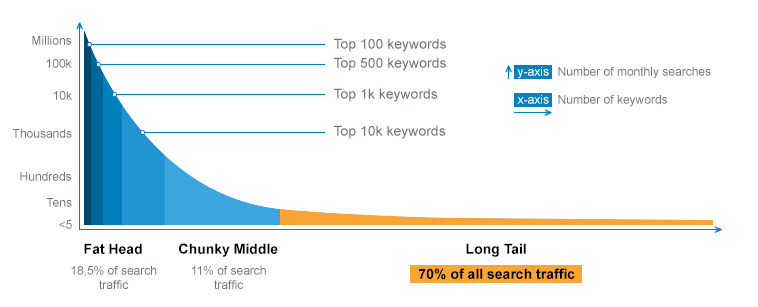
2. How Can the Long-Tail Keywords Technique Help You in SEO?
SEO should focus more on quality and relevancy. That’s when the long tail SEO comes in handy.
As we mentioned before, long tail SEO can help you rank higher on Google, increase your revenue due to the specific niche keywords, boost the organic search traffic and so on.
To understand better how long-tail keywords can improve your content creation process, follow the next techniques.
3. Long-Tail Keywords Techniques That Will Boost Your SEO Strategy
3.1 Understand Your Target Audience
Getting more insights from your target audience is a long-term process. To hit the jackpot, you should understand people and know what they want.
Do you know that each keyword in search engines is a simple reflection of a user’s desire?
You have to understand what your target audience thinks about. You should help them by answering their questions and problems. To attract your potential clients, you should create targeted content.
Before making people buy any product, they want to find out more about the products they’re interested in. They should be aware of their needs. Help them to find out specific keywords that meet their purpose of awareness. Use search strings such as “how”, “when”, “what” and “who”.
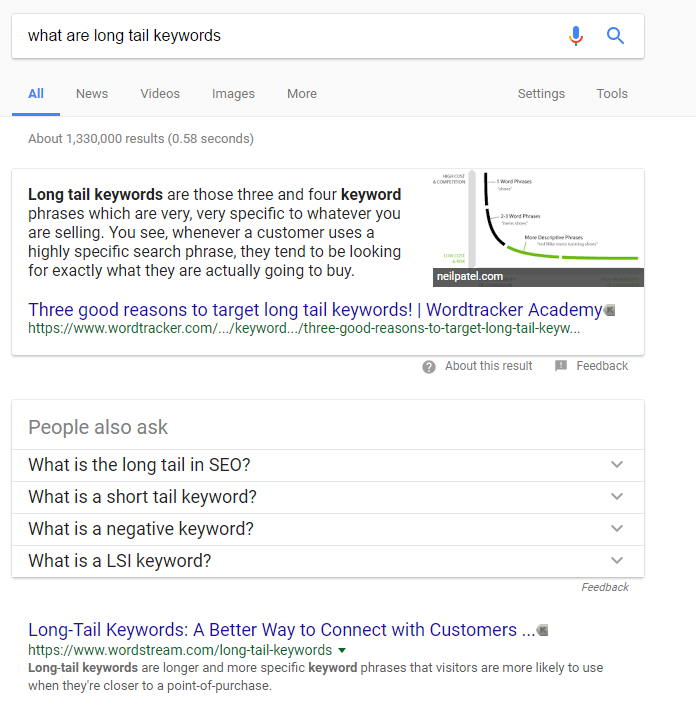
As soon as you provide them with the necessary information, you should give them all the reasons why they should buy your product or read your blog. Try to show them all challenges that can really help them make the final decision.
You should be careful at this stage as potential clients can be vulnerable and need some time to consider what they need. Try to encourage and move forward your users.
How that happens depends entirely on you. To stir them into action, you can use different comparisons, top lists, best products, reviews, costs, and benefits.
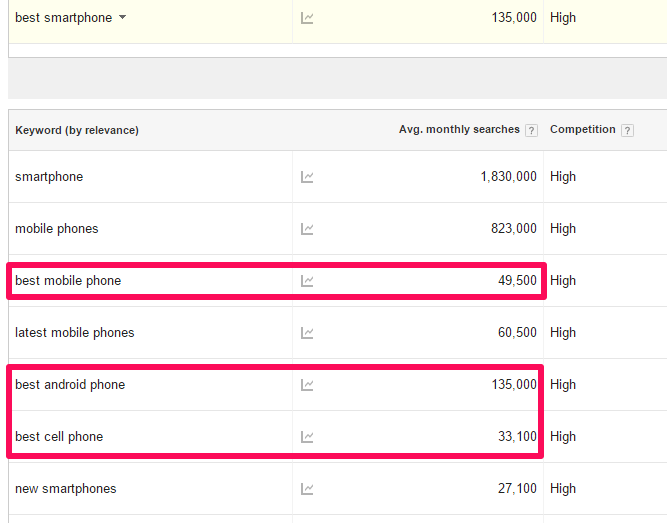
If you diligently follow all stages, the final decision will lie with your site users. To tell the truth, users come to searches with a definite target, and they use certain keywords to meet their needs. To push them, you can use specific keyword modifiers, such as best price, how to buy, buy, order, free shipping, free trial, buy online, etc.
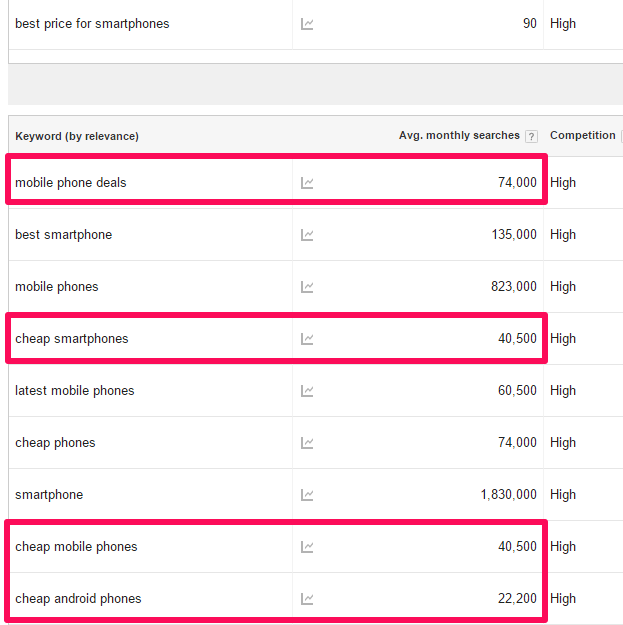
You can use your PPC data, if you have any, to guide you in your long tail strategy. If not, start being a friend with Google Instant’s Autocomplete Suggestions.
To get more ideas, you can use research tools such as Google Keyword Planner and target long tail keywords. It is important to give attention to these points. Using the right keywords phrases and putting them naturally in your content will convert your traffic into potential clients.
3.2 Research Long-Tail Keywords
It’s been proven a lot of times that long-tail keywords can have more chances to increase organic traffic than using head keywords. When you are researching the right longer variations, you should have your strategy about it.
It is important to choose those keywords that can be easily ranked in search engines. I should mention that Amazon gets high conversions and makes 60% of their sales using long-tail keywords. That’s why it is important to be appealing to customers for your online business.
- Use Google Keyword Planner from Google Adwords. Enter your target keyword and click the “Get ideas” button. Find the popular keywords. Look at the competition column for that. Make sure it isn’t low competition. Aim for medium and high.
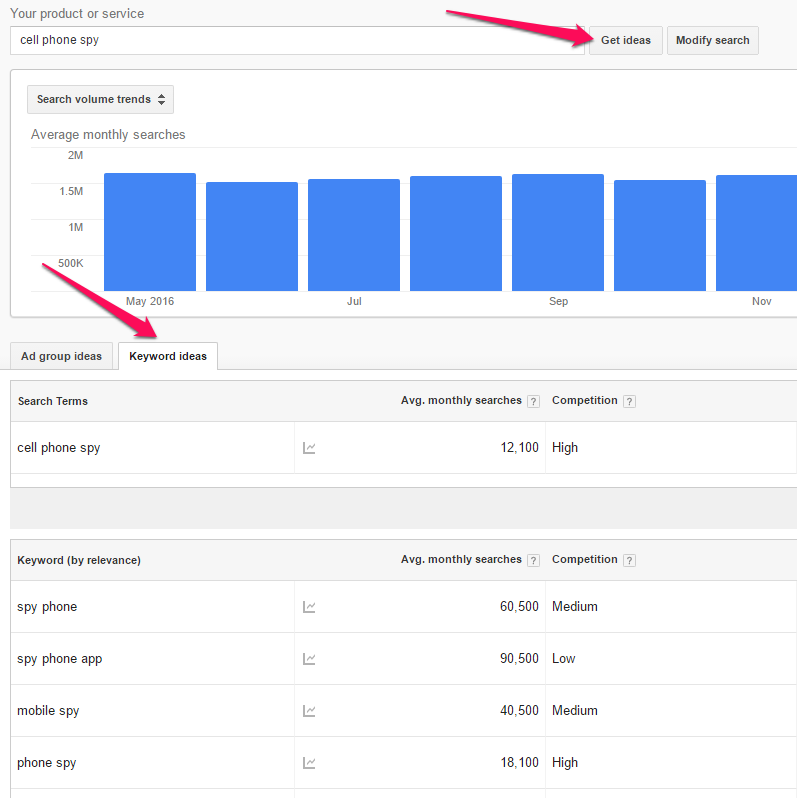
- Dig into all the keywords, highlight the long-tail variations and add them to your result list. Seek for keyword ideas and see the monthly search for each one.
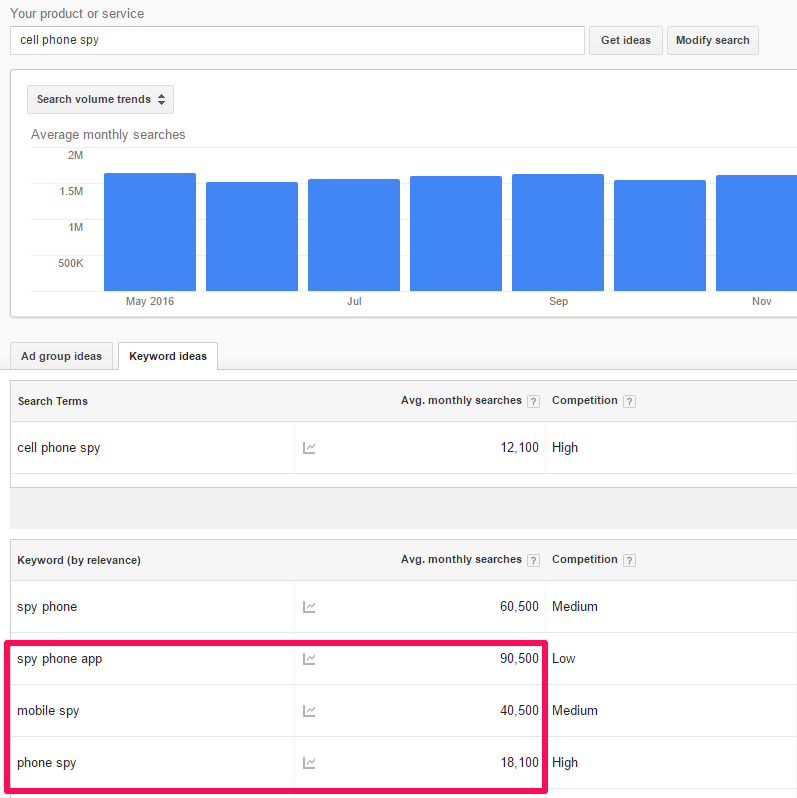
Today there are many options to simplify your keyword research and avoid wasting your time and efforts. I would like to suggest a few keyword suggestion tools that I really like:
- SE Ranking helps to get long-tail keywords based on your main keyword. This tool has a 14-day trial with a great suite of useful tools including rank tracker, website audit, backlink monitoring and online marketing plan.
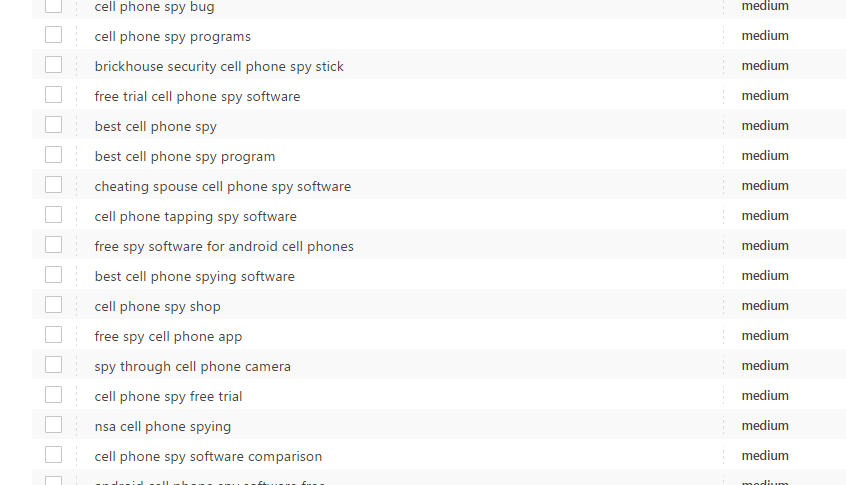
- Ubersuggest is a great keyword research tool to find longer variations and suggest more ideas for each one, but it doesn’t show search volume.
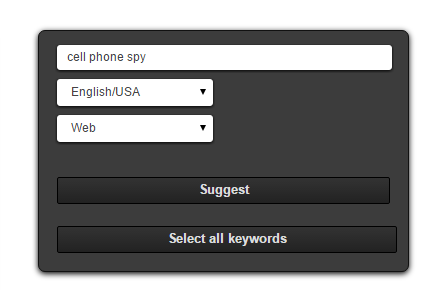

- Rank Tracker is another example of keywords tools. It has the advantage of offering complete data in comparison with your competition. It is a more comprehensive tool. If you want to play in the big league or have a big website, this is an excellent option.
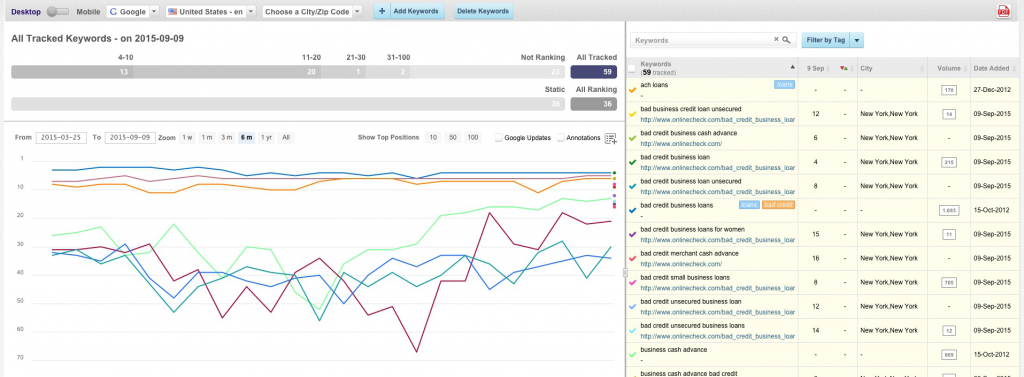
You should understand that we research keywords to help users to get what they are looking for. The new SEO tactics require taking care of your users in order to find their issues. No matter what keywords you choose, either long-tail or head, you should pay attention to the user’s intent, and not to the search robots.
Picking up the right keywords will help you write content with the searcher’s intention.
3.3 Make Breath-Catching Headlines
It doesn’t matter if you are posting on social media networks, websites, forums or blogs; your headlines play a crucial role. According to Ted Nicholas:
73% of the buying decisions that customers will ever make will be at the point of the headline.
If it grabs their attention, users will read your blog post or website.
Compelling headlines are a good guarantee to get high rankings in search engines. There are lots of formulas and tricks you could follow. One of the easiest formulas to use for creating catchy headlines is Jeff Goins’ formula:
Number + Adjective + Rational + Keywords + Promise
Using a relevant keyword in your headlines will boost your website engagement, attract more traffic and improve website positions. Give your target audience what they need to fix their problems.
After choosing the right keywords, it is important to integrate them into your headlines. First, you should put a keyword in your headline and add other words to make it look natural. Do you know how to find perfect headlines? You can try out BrandMentions. Just enter the main keyword and search for good alternatives.
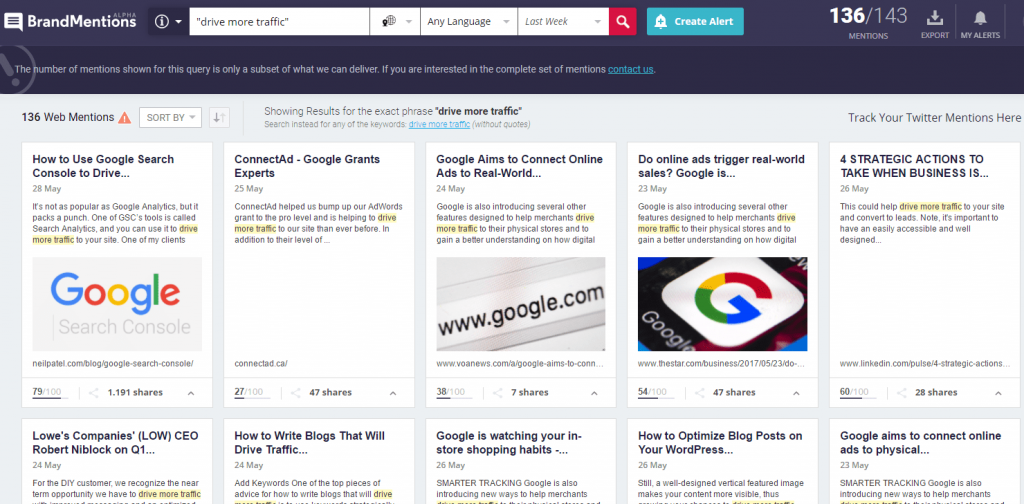
To make your posts viral, you can use numbers in your headlines.
Content Marketing Institute declares that adding odd numbers to them can increase CTR by 20%.
Moz states that 36% of people prefer headlines that contain numbers and these posts get more viral and more social shares.
Using numbers on the headlines makes people define how long they are going to read your posts.
You can easily use headlines from famous magazines. Choose your favorite magazines and find the best ideas for perfect headlines:

I have used this appealing headline:
- The 6 Cardinal Rules;
- 6 Brilliant Tricks from.
As these headlines are posted on famous magazines and have lots of social shares, I will improve these headlines and put the right keywords into them.
- Top 6 Cardinal Rules to Create an Effective Checkout Form;
- 6 Brilliant SEO Tricks from Adam Connell.
To get better ranking results, make sure to use keywords in a natural manner. I guess that is critical today, as there are lots of websites with artificially integrated keywords in their poor content.
That can lead to Google penalties. Take a look at a list of possibly artificial keywords:
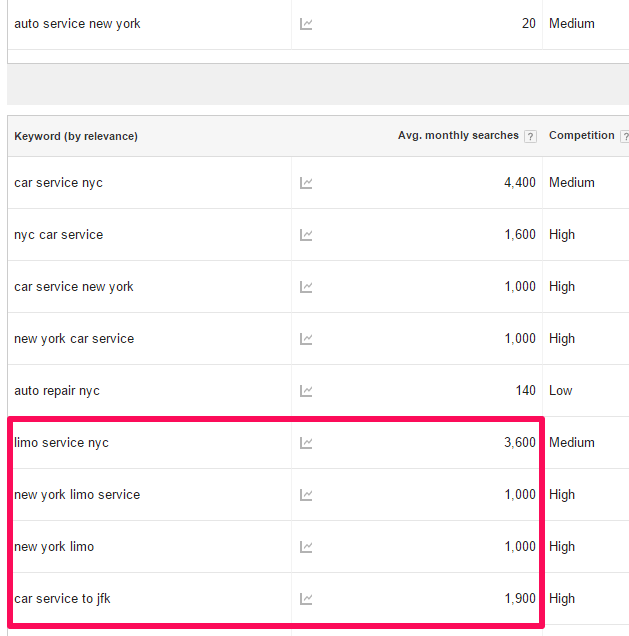
You can use these keywords, but try to use them in a natural way.
Compelling headlines are easy to understand and have good chances to be shared in social networks.
3.4 Create Intros Rich in Natural Keywords
As soon as you integrate your keywords and attract your users with compelling headlines, you should write a good introduction to prepare the reader’s mind for the post.
Actually, there is no certain rule on how to write an introduction. I used to write at least 100 words and naturally put the keywords into the content.
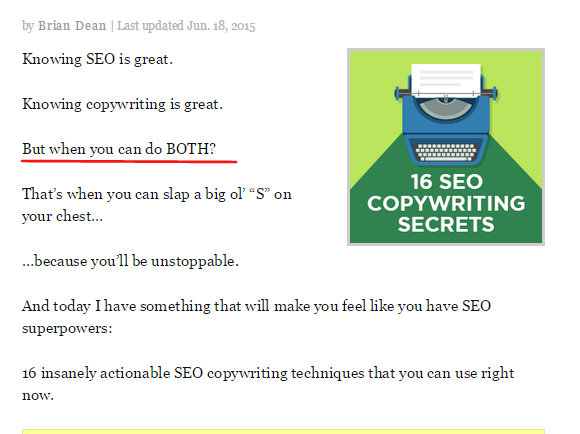
It is a hard task to write a good introduction. Make sure you formulate your opinions in a clear way and include your keywords naturally. I really like the APP method from Brian Dean that stands as Agree, Promise, and Preview. I guess this is a good tactic to write an intro to attract user’s attention.
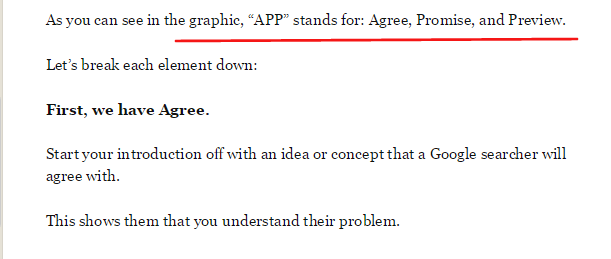
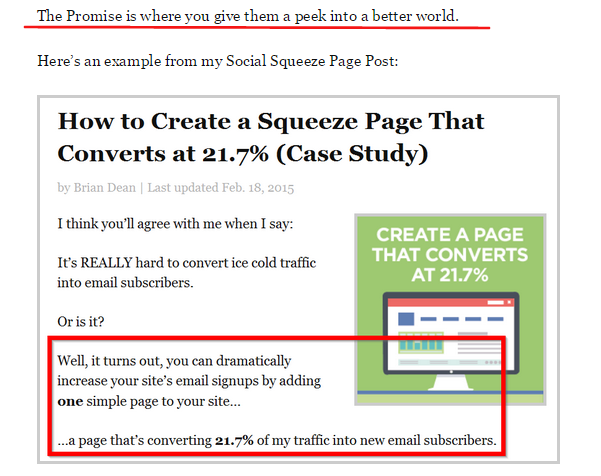
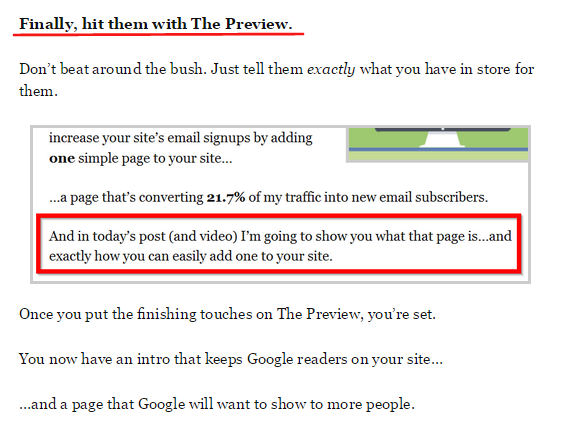
Before writing an intro, make sure you get the user’s intention with your target keywords in search. Answer these simple questions:
- How can you attract your readers?
- What is your main target?
- What solutions are they searching for?
You should understand that users are not looking for the best options. They just need to learn possible alternatives to solve their issues. Here are a few rules on how to write a good introduction:
- Use natural, top lists and question headlines that can work for the user’s intent;
- Integrate long-tail keywords, but make your content look natural;
- If you want to get a better effect from your blog posts, study posts from authority websites as Google still pays attention to on-page optimization.
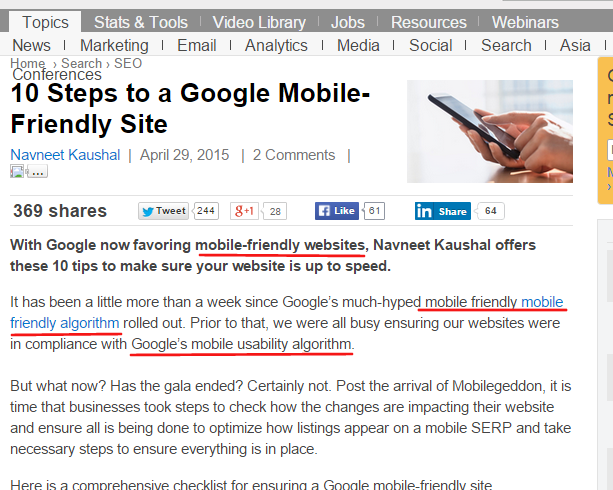
3.5 Use Subtitles with Longer Keyword Variations
Using long-tail keywords into your subtitles is another chance to get the user’s attention and possibly increase website rankings.
Subtitles can tell a lot what your blog post is about. People first scan headlines, subtitles, digital content, and media before digging into your blog post. If your subtitles are not impressive and interesting, readers will never come back to your site again.


Follow these cardinal rules to create good subtitles:
- Use the <h2> or <h3> tags to support your SEO efforts;
- Make subtitles relevant to your topic and the headline;
- Use latent semantic indexing. That means using specific synonyms and longer variations to prevent from keyword stuffing.
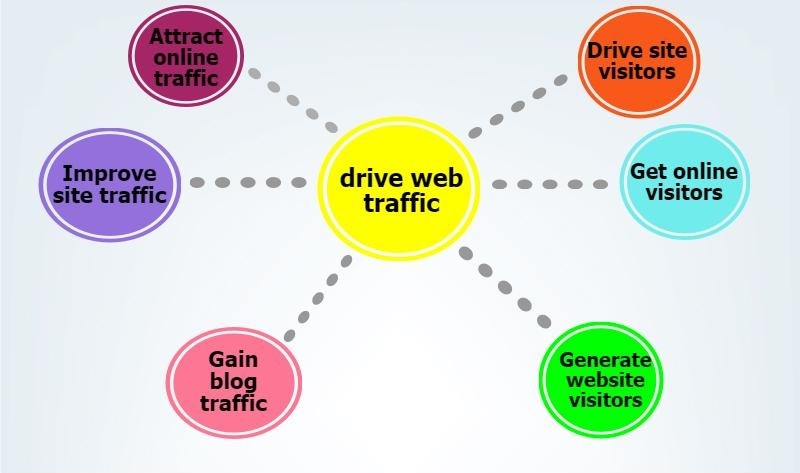
Make sure that keywords and synonyms in your subtitles look natural and give Google all prerequisites to identify your website as an authority.
3.6 Optimize Your Content for Users
On-page optimization is a mandatory requirement for any webmaster.
It helps deliver the best user experience to your website customers. Creating useful content for users is not only simple, but it will provide benefits for you.
I know there are a lot of articles about on-page optimization, but you just need to understand that the common sense of all your activities should represent “quality”.
Here are top practical tips you should follow:
- Useful: Users need practical tips to easily follow them, enjoy and get effective results.
- Show your purpose: Before creating content, you should let people know about your target. Whether you want to teach customers on how to promote a website or how to install a cell phone spying software.
- Exciting: No matter what your niche is, you should learn to write interesting content.
- Relevant: Relevance is what you should go after in any field. Make your headlines, subtitles, keywords and content relevant.
Keyword research plays a significant role in content optimization:
- Try to put the user’s interests first before getting links;
- Write for the user first;
- Use natural anchor texts when linking out.
Conclusion
There are many tools that can help you make your SEO successful and avoid spending too much time on manual activities. To drive much organic traffic, you should try out long-tail keywords. That might give a long-term success in search results.
Analyze what keywords your competitors use. If you find some great ones, you can integrate them naturally into your content or just search for longer variations with Google Keyword Planner. Keep a sharp eye on how you put them into content.
This article is neither an ultimate guide for finding profitable keywords nor a beginner’s guide to search marketing. Yet, it will give you a helpful hand in what concerns the longtail search.
There are a lot of SEO tools out there that will give you info on a particular keyword’s difficulty score, how to do onpage SEO, quality content or link building. But the truth is that the greatest weapon you’ll ever have is your ability to uncover how your users think and react. You can read articles on the niche, write indepth content, do guest blogging on sites with high domain authority or learn SEO night and day. As long as you understand your users, you can say that you are heading in the right direction.
Imagine you are talking to your potential clients and focus on it to reach the better effect. It is so simple to use long-tail keywords, isn’t it? Let us know how you integrate the keywords into your content. Have you had any success with long-tail keywords? Please, leave your comment below.

 Site Explorer
Site Explorer Keyword tool
Keyword tool Google Algorithm Changes
Google Algorithm Changes


It’s true that long tail or specific keywords have lower no. of search traffic as compared to broad or general search terms, but long tail search terms have a very higher possibility of ROI as they have more chances to convert a visitor into the customer.
Great article Razvan. I have now realized the importance of long tail search terms. Thanks Razvan for a thoughtful and very practical post.
Long tail keyword targeting is one of the most easiest way top target keywords. It takes less time and gives ranking for your desired keywords. It is still a valid way to start SEO.
Of course it is great method. Why bother to fight big corporations with the most popular keywords if you can take smaller piece of cake which is easier to get?
I think the long tail keywords will be important always and never die! because Googlers change the searching rules and in this days people never search for “watch” they search for the specific brand with specific color or features
Long-tail really works!!!
Hey, Razvan I have been now trying for weeks to understand about Long Tail search terms. I have never come across another such apt and accurate article about it such as yours. This article really helped me understand the most basic points as well!
I am a marketing manager working for a well-known business in Atlanta, and some other cities in Georgia. Recently, the company hired an agency to improve the website’s SEO. The agency recommended that we should start using long tailed keywords. Ever since then, I have been doing research on long tailed keywords. I came across you post and it has given me a pretty good idea about long tailed keywords and their uses. It seems the agency has suggested a pretty good strategy.
Hey,
Thank you a big big time buddy!
I was looking for something like this for so long. How came I have not seen this post yet?? You are in my bookmark now. Thank a million zillion trillion times!!
Thanks for the valuable
input about long-tail research. I will follow these tips.
Your expertise will help me tremendously.
Thank You.. ?
Brilliant article. The information I have been searching precisely. It helped me a lot, thanks. Keep coming with more such informative article. Would love to follow them.
Yes, it most definitely still works!
Hey man, I enjoyed the read alot! It was a great way to be reminded which technology is just about to kick in when we’re talking about search engines. The rules of SEO are ever changing. Not in the “panic” way, but it’s steadily turning in another direction with voice search, VR etc that we’ll have to adabt our SEO effort to 😉
Great year for SEO from my perspective, especially now Penguin is real-time which will (hopefully) eliminate some of the scrubs and their pesky link building tools. I beleive SEO is developing into a more technical role, as I work for a fairly large eCommerce company as an SEO Analyst, I don’t find myself doing the day-to-day tasks as I would have done agency-side, instead I’m starting to become involved in the more technical stuff, crawls, log file analysis, using XPath extractions with Screaming frog etc.
The mobile-first transition is also going to be a very interesting one, I’m hoping some industry experts will talk about this next year at conferences.
Hello, Razvan
Thanks for the write up- there are useful ideas there. I didn’t get completely your point about the long tail Keywords. Ok-we have chosen the suggested words, which have high or medium competition and then what?
Let’s say you would like to chose keywords for your site Meta description and after filtering still have 50 suggestions with same parameters (i.e. Monthly search) – What criteria are you going to use to chose very few results from these 50 (assumption) results?
Regarding the example with the artificial words-I agree – misleading the customers sometimes could bring penalties. Not everything in this world is SEO…but as you mentioned in the beginning-the people who are already on your site is more likely to buy…one way, or another….
Hi, Natalie!
What I would do in this situation is to choose the most relevant keywords to your content. 50 suggestions is too much to work with.
Something else you could do is run a quick search with those specific keywords in Google search and see how many results you have for each query. Keep the top 10 with the higher number.
In the end, use all those suggestions in your content, if possible.
Regarding your last questions. The answer is pretty easy: People who end up on a page are more likely to buy. But this will happen only if they came naturally. In case you artificially add keywords you might risk having a high bounce rate.
Regards,
Andreea
Dear Andreea,
Thank you a lot for your answer. Could you please advise approximately How many long-tailed Keywords should be my target as number? I found about 6 relevant long tail ones, which seem suitable.
With the increasing popularity of voice searches, this is only becoming more relevant. Good article, thanks!
Agreed. If long tail keywords were no longer effective then how would shorter keywords be useful? It would simply mean that everyone was competing for short generic terms that might not be relevant to what the usr wanted.